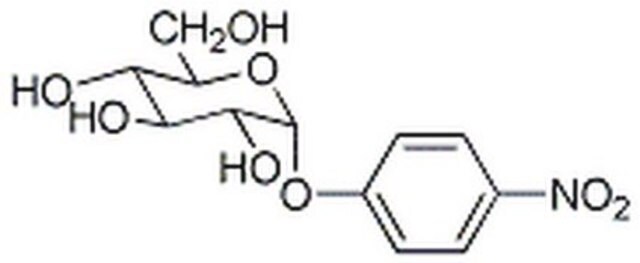SC1002
Anti-Sox2 Mouse mAb (245610)
lyophilized, clone 245610, Calbiochem®
Zaloguj sięWyświetlanie cen organizacyjnych i kontraktowych
About This Item
Kod UNSPSC:
12352203
NACRES:
NA.41
Polecane produkty
pochodzenie biologiczne
mouse
Poziom jakości
forma przeciwciała
purified antibody
rodzaj przeciwciała
primary antibodies
klon
245610, monoclonal
Postać
lyophilized
reaktywność gatunkowa
human, mouse
producent / nazwa handlowa
Calbiochem®
warunki przechowywania
OK to freeze
izotyp
IgG2a
Warunki transportu
wet ice
temp. przechowywania
−20°C
docelowa modyfikacja potranslacyjna
unmodified
informacje o genach
mouse ... Sox2(20674)
Opis ogólny
Protein G purified mouse monoclonal antibody derived by immunizing mice with the specified immunogen and fusing splenocytes with mouse myeloma cells. Recognizes the ~34 kDa Sox2 protein.
Recognizes the ~34 kDa Sox2 protein in NTERA-2 cells.
This Anti-Sox2 Mouse mAb (245610) is validated for use in Immunoblotting, Immunocytochemistry, Flow Cytometry for the detection of Sox2.
Immunogen
Human
a recombinant protein consisting of amino acids 135-317 of human Sox2, expressed in E. coli
Zastosowanie
Immunoblotting (1-2 µg/ml)
Immunocytochemistry (10 µg/ml; see comments)
Flow Cytometry (see comments)
Immunocytochemistry (10 µg/ml; see comments)
Flow Cytometry (see comments)
Ostrzeżenie
Toxicity: Standard Handling (A)
Postać fizyczna
Lyophilized from 0.2 µm-filter sterilized PBS, 5% trehalose.
Rekonstytucja
Reconstitute with 200 µl sterile PBS for a final stock concentration of 500 µg/ml. Following reconstitution, aliquot and freeze (-20°C or -70°C) for long-term storage. Avoid freeze/thaw cycles of solutions. Thawed aliquots are stable for up to 1 month at 4°C.
Komentarz do analizy
Positive Control
NTERA-2 cells
NTERA-2 cells
Inne uwagi
Avilion, A.A., et al. 2003.Genes Dev.17, 126.
Graham, V., et al. 2003.Neuron39, 749.
Stevanovic, M. 2003.Mol. Biol. Rep.30, 127.
Kishi, M., et al. 2000.Development127, 791.
Uwanogho, D., et al. 1995.Mech. Dev.49, 23.
Yuan, H., et al. 1995.Genes Dev.9, 2635.
Graham, V., et al. 2003.Neuron39, 749.
Stevanovic, M. 2003.Mol. Biol. Rep.30, 127.
Kishi, M., et al. 2000.Development127, 791.
Uwanogho, D., et al. 1995.Mech. Dev.49, 23.
Yuan, H., et al. 1995.Genes Dev.9, 2635.
For immunocytochemistry, cells should be fixed in PBS containing 4% paraformaldehyde for 20 min, followed by blocking in PBS/10% normal donkey serum/1% BSA/0.1% Triton™ X-100 detergent for 45 min and staining overnight at 4°C with appropriately diluted primary antibody. For immunoblotting, the best results may be obtained using whole cell or nuclear extracts; Sox2 may be difficult to detect in cytoplasmic extracts. The detection limit for recombinant Sox2 is ~5 ng/lane under reducing and non-reducing conditions. For intracellular staining by flow cytometry, fix cells in 4% paraformaldehyde and permeabilize with 0.1% saponin. Following fixation and permeabilization, dilute the antibody to 50 µg/ml and add 10 µl diluted antibody to 1-2.5 x 105 cells in a total volume of ≤200 µl. Following incubation with appropriate detection antibody, the cells should be washed a final time with 0.1% saponin prior to analysis. Antibody should be titrated for optimal results in individual systems.
Informacje prawne
CALBIOCHEM is a registered trademark of Merck KGaA, Darmstadt, Germany
Triton is a trademark of The Dow Chemical Company or an affiliated company of Dow
Ta strona może zawierać tekst przetłumaczony maszynowo.
Nie możesz znaleźć właściwego produktu?
Wypróbuj nasz Narzędzie selektora produktów.
Kod klasy składowania
11 - Combustible Solids
Klasa zagrożenia wodnego (WGK)
WGK 1
Certyfikaty analizy (CoA)
Poszukaj Certyfikaty analizy (CoA), wpisując numer partii/serii produktów. Numery serii i partii można znaleźć na etykiecie produktu po słowach „seria” lub „partia”.
Masz już ten produkt?
Dokumenty związane z niedawno zakupionymi produktami zostały zamieszczone w Bibliotece dokumentów.
Mohammad Zandi et al.
International journal of fertility & sterility, 9(3), 361-370 (2015-12-09)
This research studies the effects of activation and inhibition of Wnt3A signaling pathway in buffalo (Bubalus bubalis) embryonic stem (ES) cell-like cells. To carry on this experimental study, the effects of activation and inhibition of Wnt3A signaling in buffalo ES
Ana Belén Alvarez-Palomo et al.
Stem cells (Dayton, Ohio), 39(7), 866-881 (2021-02-24)
A key challenge for clinical application of induced pluripotent stem cells (iPSC) to accurately model and treat human pathologies depends on developing a method to generate genetically stable cells to reduce long-term risks of cell transplant therapy. Here, we hypothesized
Huahu Ye et al.
Cellular physiology and biochemistry : international journal of experimental cellular physiology, biochemistry, and pharmacology, 50(4), 1318-1331 (2018-10-26)
Induced pluripotent stem cells (iPSCs) hold great promise for regenerative medicine, disease modeling, and drug development. Thus, generation of non-integration and feeder-free iPSCs is highly desirable for clinical applications. Peripheral blood mononuclear cells (PBMCs) are an attractive resource for cell
Ran Zhou et al.
Molecular reproduction and development, 86(11), 1671-1681 (2019-08-21)
Incomplete transgene-silencing remains a challenge in the generation of induced pluripotent stem cells (iPSC) in felids-a critical family in biomedical and biodiversity conservation science. In this study doxycycline-inducible transgenes (NANOG, POU5F1, SOX2, KLF4, and cMYC) were used to reprogram cat
Mohammad Zandi et al.
Cell journal, 17(2), 264-273 (2015-07-23)
In order to retain an undifferentiated pluripotent state, embryonic stem (ES) cells have to be cultured on feeder cell layers. However, use of feeder layers limits stem cell research, since experimental data may result from a combined ES cell and
Nasz zespół naukowców ma doświadczenie we wszystkich obszarach badań, w tym w naukach przyrodniczych, materiałoznawstwie, syntezie chemicznej, chromatografii, analityce i wielu innych dziedzinach.
Skontaktuj się z zespołem ds. pomocy technicznej